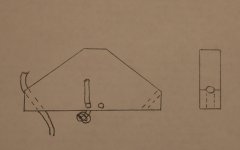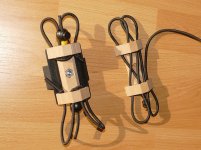Kevin Conville
yardbirder
Food for thought...
Two separate cords for both the front and back of the bin.
The cords would come in from the top of the bracket and adjust with cord locks.
I understand this would increase bulk some because of the extra material needed for the cord to come through from the top. Also the cord locks will be more "outboard".
Excuse the crude drawing, I just whipped it up on the moment. No radii and not to scale
Two separate cords for both the front and back of the bin.
The cords would come in from the top of the bracket and adjust with cord locks.
I understand this would increase bulk some because of the extra material needed for the cord to come through from the top. Also the cord locks will be more "outboard".
Excuse the crude drawing, I just whipped it up on the moment. No radii and not to scale
Attachments
Last edited:







